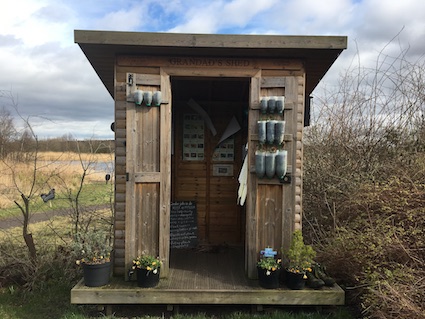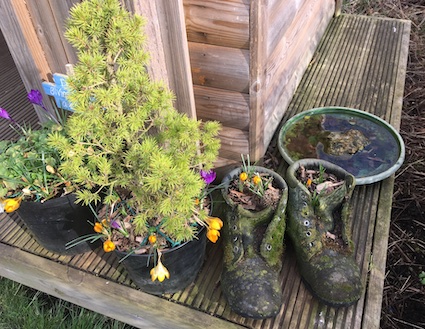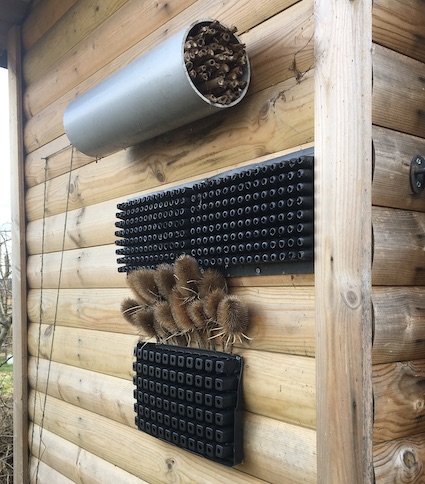
Sheds are very useful places. Most of us consider their value in relation to the storage of resources. This particular shed can be found at the Dearne Valley Old Moor RSPB Reserve. It demonstrates how you can add a few bits and pieces to create shelter, water, food and even nesting material for wildlife. In other words, it’s a place where biodiversity can happen too.

At the base of the shed, you can see that old boots have been used to plant flowers. Putting out an old plate or flowerpot tray provides a source of water. You can tell these boots have been looking after flowers for a very long time… it’s not often you see them moss-covered!

On one side of the side, old seed trays have been nailed on. These can provide homes for solitary bees and other winged insects. The teasel heads that have been poked through are a useful source of seed for birds such as goldfinches that pull the seeds out of the heads every autumn. The teasel heads were also essential in the wool industry, for carding the wool.

This box attached to the other side of the shed contains dried grass, which is useful nesting material for birds. Below this you can see bamboo canes stored inside the cut of pipes. Solitary bees such as the mason bee appreciate these. Long bamboo canes have also been stacked inside a guttering pipe on the other side.

Finally check out the use of old plastic milk bottles. These have been attached by running a plank of wood through the handles. You can see that the bottles hang upside down and make a good place for bulbs, herbs or flowers to grow. You can even pick your size of milk container to use!
I’m not sure if the roof of the shed houses a turf roof or equivalent. However, I hope you enjoyed the creativity of the wardens and volunteers who made the most of the shed. What’s on your walls? Are your outdoor displays relevant for all visitors to your outdoor space which includes visiting wildlife?
This blog post was originally published in January 2019.



















